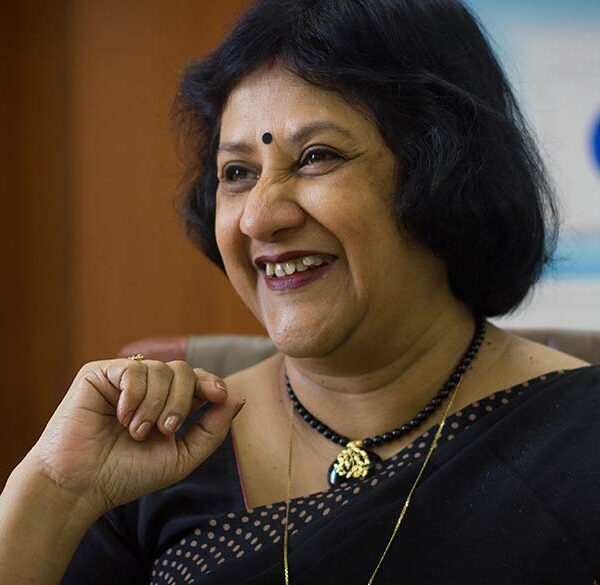Vismaya Bakshi was a passionate diver and today, she owns and operates with her husband,…
Read More →

Vismaya Bakshi was a passionate diver and today, she owns and operates with her husband,…
Read More →
As soon as I was out of school I was expected to take care of…
Read More →
She joined the State bank of India as a 21-year-old intern! And today she leads…
Read More →
I love the freedom to think, actively take up more challenges, , meeting new people,…
Read More →
With a background in Dental Sciences, and an investment of 5 years in the medical…
Read More →
“Ladies should be in a job like teaching where they can give enough time to…
Read More →
Meet Akshuna, a fun-loving, travel and dance freak, who is a resilient go-getter and strongly…
Read More →
Arushi Vaish started up Happy Hakka in 2013 with 3 friends who were craving for…
Read More →
“After observing the dismal condition of education around us, my friends and I, were discussing…
Read More →
Shubhika Sharma, the Chief Fashion Officer of Papa Don’t Preach is the founder of a…
Read More →
Vismaya Bakshi was a passionate diver and today, she owns and operates with her husband,…
Read More →
As soon as I was out of school I was expected to take care of…
Read More →
She joined the State bank of India as a 21-year-old intern! And today she leads…
Read More →
I love the freedom to think, actively take up more challenges, , meeting new people,…
Read More →
With a background in Dental Sciences, and an investment of 5 years in the medical…
Read More →
“Ladies should be in a job like teaching where they can give enough time to…
Read More →
Meet Akshuna, a fun-loving, travel and dance freak, who is a resilient go-getter and strongly…
Read More →
Arushi Vaish started up Happy Hakka in 2013 with 3 friends who were craving for…
Read More →
“After observing the dismal condition of education around us, my friends and I, were discussing…
Read More →
Shubhika Sharma, the Chief Fashion Officer of Papa Don’t Preach is the founder of a…
Read More →
Vismaya Bakshi was a passionate diver and today, she owns and operates with her husband,…
Read More →
As soon as I was out of school I was expected to take care of…
Read More →
She joined the State bank of India as a 21-year-old intern! And today she leads…
Read More →
I love the freedom to think, actively take up more challenges, , meeting new people,…
Read More →
With a background in Dental Sciences, and an investment of 5 years in the medical…
Read More →
We take pride in having reached a point in history where so much stress is being given to women’s education. We bask in the self-assumed glory of sending our girls to schools.
Does not this sense of pride come from a consideration that women are being provided something as a favour, something the procurement of which corrupts the purity of their gender and distances them from their gender roles that are supposed to be naturally assigned to them?
The school, as an institution, holds all these biases in the background and functions as a strict medium to incorporate gendered education to the students.
People in metropolitan cities and other urban areas might not see a visible form of gender discrimination in schools like it exists in semi-urban and rural spaces. The imposition of gender is witnessed in the way girls are supposed to be dressed, behave in a class and the premises of a school and move with other schoolmates. Many top inspiring women and Indian women achievers have taken it upon themselves to become the face of protest against female subordination and harassment that result from the gender binary in a patriarchal society.
The dress code for girls and boys , the changes in the dress code around the time when the child is supposed to hit puberty, and other nuances in the dress code reaffirm gender divisions.

The dress code, from shorts to pants for boys, and from skirts to ‘salwar-kameez’ for girls (in most schools in India) traces a movement towards the strict binaries of gender. The gender binary that exists in our societies, a binary that attaches a specific gender to an anatomical body, finds expression and reinforces itself in the psychology of a child as much through disciplining in schools as in homes. The institution of school that professes to do away with the gender discrimination and the subjugation of women by educating them, becomes a vehicle for planting gender codes into the minds of the students.
Schools are themselves a space that functions within, accepts and propagates the gendered structure of the society.
To look up to a school as an androgynous space that bestows the girl child with equal opportunities would be embracing only the superficial and neglecting the breeding mechanism of gender dichotomies.
The implementation of certain activities in schools also sees this bias that can not be overlooked, For extracurriculars generally have a gendered pattern in their admission of students. This pattern reflects the conventional roles ( career, or otherwise) associated with men and women. The dance classes will have girls only, the classes for teaching electrical and other mechanical skills will usually be devoid of girls.
What we fail to understand is that the social, economic independence that we are offering to women by educating them does not hold any weight since this education exists inside and conforms to the gendered regime of patriarchy. The education that such an institution imparts is gendered as well.
The punishment for breaking the gender codes are also different for boys and girls and many inspiring Indian women have been a victim to this. They are mostly punished for “being boys”, the being that grants them the freedom of spirit.
While boys are dealt with physically, the punishment that girls suffer is mostly of a psychological kind. It mostly includes defaming, boycotting and ostracising a female student for doing anything “un-womanly” or bold.
The psychological torture faced by female students scars their confidence and pulls them down to the state of subjugated womanhood that the society wants to posit them at.

Girls from almost school, and many women health and fitness blogs, have stories of female students getting ganged up on by teachers for being noticed with a male classmate, for roaming around with boys, for wearing short skirts, for having hair a different way, and for many other reasons. The point of this disciplining clearly is to inculcate gender into the students’ heads and make them abiding gendered subjects.
There are many other instances of how one gender identity is treated differently from the other in schools. What is important is to realise that for schools to impart an education that actually helps women to attain a social standing at par with men in the social sphere, they need to provide an androgynous space to students where the gender codes that limit and restrict the life experiences of individuals, and control them through the strings of a discriminatory gender, are questioned, analysed and broken.
Our efforts towards freeing women from the yoke of dependence and discrimination will be insufficient unless the binary of sex-gender in a patriarchal heteronormative society is not challenged.
© Feministaa 2024 Media Pvt. Ltd. All rights reserved


